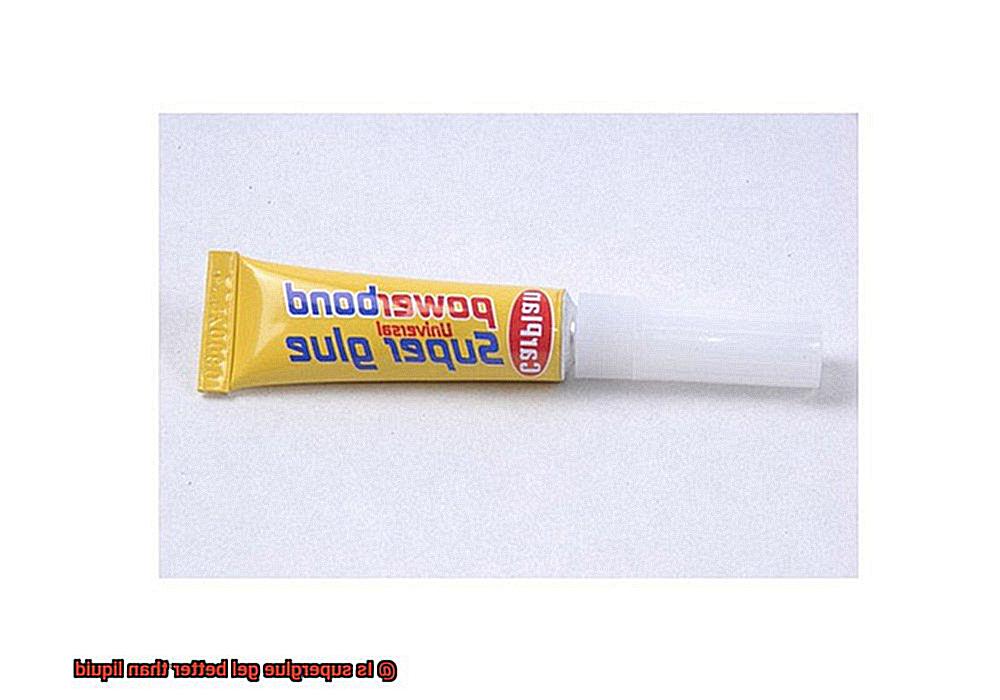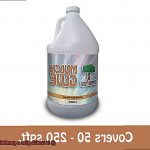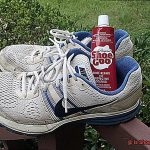Picture this: you’re knee-deep in a DIY project, desperately trying to piece together the broken fragments of your favorite vase. Enter super glue, the hero of all adhesive solutions. But here’s the catch – should you go for the trusty gel or opt for the liquid version? It’s a sticky situation indeed.
In this blog post, we’re diving headfirst into the epic battle between super glue gel and its liquid counterpart. We’ll break down their unique qualities, uncover their hidden strengths and weaknesses, and help you navigate through the maze of choices.
So whether you’re a crafty creator or just someone who likes to fix things up around the house, get ready for an adhesive adventure like no other. We’re about to spill all the secrets on which type of super glue reigns supreme. Let’s get stuck into it.
Pros and Cons of Gel Superglue
Contents
- 1 Pros and Cons of Gel Superglue
- 2 Pros and Cons of Liquid Superglue
- 3 Best Applications for Gel Superglue
- 4 Best Applications for Liquid Superglue
- 5 What is the Difference Between Gel and Liquid Superglue?
- 6 How to Choose Between Gel and Liquid Superglue?
- 7 Tips for Applying Gel or Liquid Superglue
- 8 Common Mistakes When Using Superglues
- 9 Conclusion
When it comes to adhesive options, gel superglue stands out for its unique properties and versatility. Its thicker consistency and slower drying time provide control and precision, making it perfect for delicate projects. However, it’s important to weigh the pros and cons before deciding if gel superglue is the right adhesive for your needs.
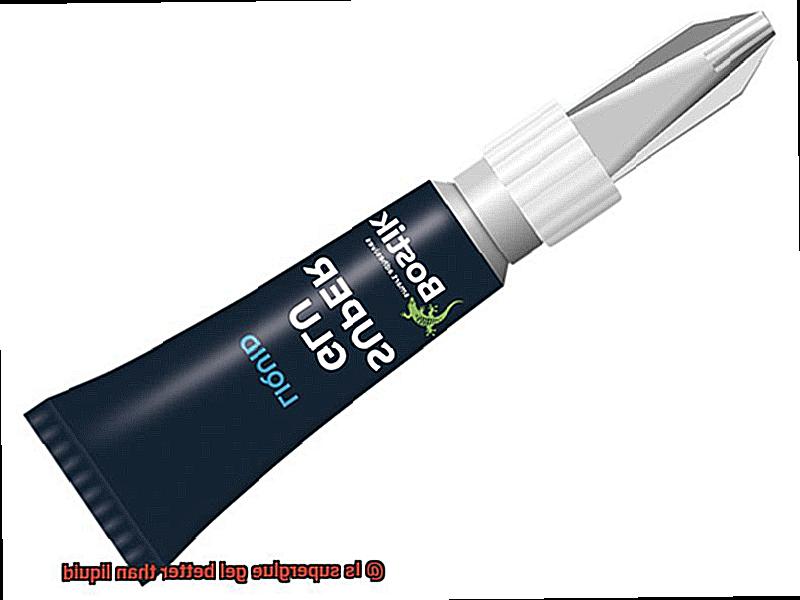
Pros of Gel Superglue:
Control and Precision:
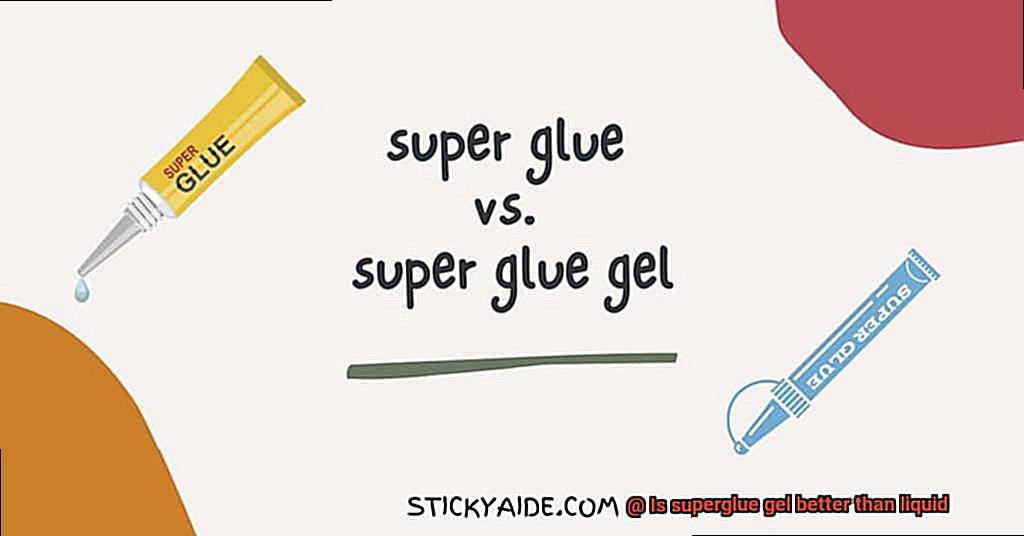
The gel-like consistency of gel superglue offers excellent control during application, making it perfect for intricate projects like jewelry repairs or model building. The glue stays in place, ensuring a clean and accurate bond.
Gap-Filling Abilities:
Gel superglue excels at filling small gaps and cracks with its thick consistency, creating strong bonds even on irregular surfaces. This makes it an excellent choice for repairing broken objects or bonding materials with uneven surfaces.
<4>Longer Shelf Life:
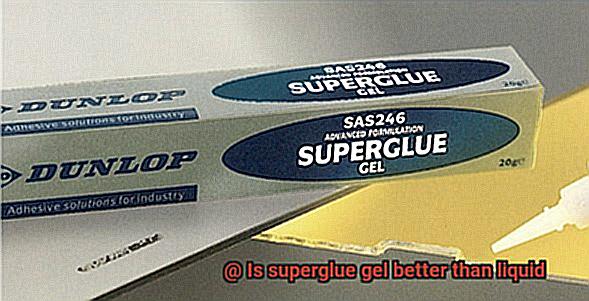
Gel superglue’s gel formulation prevents evaporation, giving it a longer shelf life than liquid superglue. This is particularly beneficial for occasional users or those who need adhesive for infrequent repairs.
Versatility:
Gel superglue can be used on various materials, including plastic, metal, wood, ceramic, and rubber. Its versatility makes it a go-to adhesive for a wide range of projects, from DIY crafts to household repairs.
Cons of Gel Superglue:
Slower Drying Time:
While the slower drying time is advantageous for some applications, it can be a drawback when time is of the essence. If you require an instant bond or need to complete a project quickly, the extended drying time of gel superglue may not be ideal.
Limited Penetration:
Due to its thicker consistency, gel superglue may not penetrate porous materials as effectively as liquid superglue. This can result in weaker bonds on surfaces that require deep penetration, like certain types of wood or fabrics.
Potential Messiness:
The thick nature of gel superglue can make it messy to work with, especially if excessive amounts are applied. Accidental spills or smears may leave behind visible residue that can be challenging to clean up. Proper application techniques and moderation are essential to avoid any messy mishaps.
Cost:
Gel superglue is generally more expensive than liquid superglue. If you have a large project that requires a significant amount of adhesive, the cost may add up quickly. Consider your budget before opting for gel superglue.
Pros and Cons of Liquid Superglue
Liquid superglue, a traditional and widely used adhesive, offers both advantages and disadvantages that are important to consider. On the positive side, liquid superglue is highly versatile, capable of bonding various materials like metal, plastic, rubber, and wood. This versatility makes it a go-to choice for DIY projects and repairs. Its thin consistency allows it to penetrate small cracks and gaps with ease, making it perfect for delicate items or situations that require precise fitting.
Another significant advantage of liquid superglue is its quick drying time. Within seconds or minutes, depending on the brand and conditions, the glue sets and creates a strong bond. This rapid bonding can be incredibly useful when time is of the essence or patience is limited.
In addition to its versatility and quick drying time, liquid superglue tends to have a longer shelf life compared to gel superglue. Its extended durability allows for storage over long periods without diminishing effectiveness.
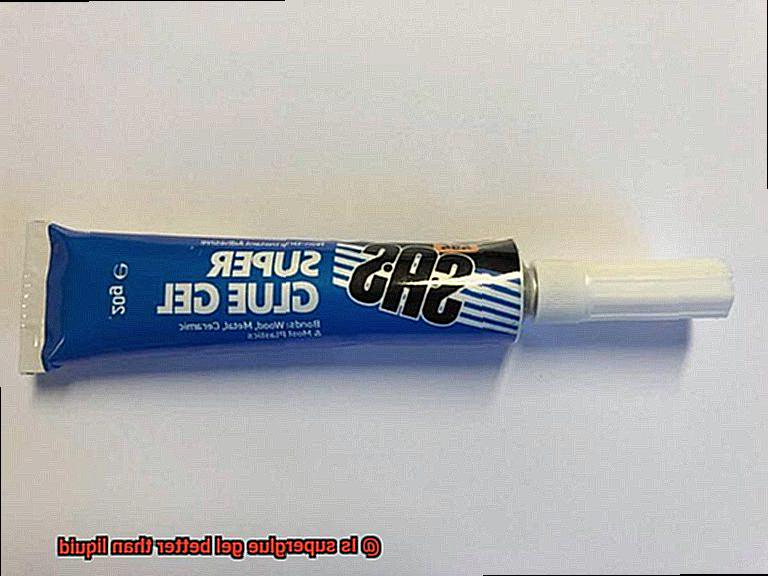
Despite these benefits, there are some drawbacks to consider. Liquid superglue’s runny consistency can make it challenging to handle without creating spills or messes. Dispensing the appropriate amount of glue can also be difficult, leading to excessive application or uneven bonding.
Furthermore, once cured, liquid superglue lacks flexibility and becomes brittle. This brittleness makes it prone to cracking under stress or movement, rendering it unsuitable for applications that require flexibility or constant movement.
The strong odor emitted by liquid superglue due to its chemical formulation can also be unpleasant, especially for individuals with sensitivities or allergies. Working in a well-ventilated area is crucial to minimize exposure to these fumes.
Removing excess or spilled liquid superglue can be particularly challenging as it bonds permanently to surfaces. Specialized solvents or techniques may be required for effective removal.
Lastly, direct contact with liquid superglue can cause skin irritation or burns. Consequently, cautious handling and avoidance of skin contact are essential to prevent adverse reactions.
Best Applications for Gel Superglue
Prepare to meet your new secret weapon in the world of adhesives: gel superglue. This unsung hero is about to steal the spotlight with its versatility, strength, and precision. From woodworking to crafting, automotive repairs to household fixes, electronics to medical applications, gel superglue has proven itself as the adhesive of choice in countless industries and DIY projects. In this article, we will dive into the best applications for gel superglue and discover why it outshines other adhesives in a variety of scenarios.
Woodworking Wonder:
Step into the workshop and witness gel superglue’s magic in action. With its thick consistency, it effortlessly stays in place without seeping into the wood grain, resulting in cleaner and more precise bonds. Whether you’re joining wood joints, filling cracks, or repairing damaged wood, gel superglue outperforms liquid superglue with its stronger and more durable bond.
Crafting and DIY Delight:
Gel superglue is your go-to adhesive for all your crafting and DIY projects. Its versatility knows no bounds as it effortlessly bonds a wide range of materials such as plastic, metal, ceramic, and fabric. From jewelry-making to sculpting intricate masterpieces, gel superglue guarantees a reliable and robust bond that will withstand the test of time.
Automotive Excellence:
In the fast-paced world of automobiles, gel superglue shines bright. Vibrations and temperature changes are no match for its exceptional bonding properties. From repairing interior components like dashboards, upholstery, and trim pieces to ensuring your fixes last a lifetime, gel superglue proves its worth time and time again.
Household Hero:
Have no fear when gel superglue is near. From fixing broken ceramics or porcelain items to securing loose parts, this adhesive is the trusty sidekick for all your small household repairs. Its precision applicator allows for easy and controlled dispensing, ensuring accurate bonding even in the most delicate of repairs.
Electronics Enthusiast’s Dream:
Attention all DIY electronics enthusiasts and professionals: gel superglue is a must-have in your toolkit. Its ability to secure wires and components in place without the risk of short circuits or damage makes it the go-to adhesive for delicate electronic devices. Say goodbye to worries and hello to peace of mind.
Medical Marvel:
Believe it or not, gel superglue even finds a place in the medical field. It can be used to close minor cuts and wounds that do not require stitches, creating a waterproof seal that helps prevent infection and promotes healing. Remember, though, that deep or heavily bleeding wounds require medical advice.
Best Applications for Liquid Superglue
When it comes to adhesives, liquid superglue stands out as a versatile and reliable option. With its fast-drying and strong bonding properties, this unsung hero has become an essential tool in various industries and DIY projects. Whether you’re a crafting enthusiast or a handyman, liquid superglue is a must-have in your toolbox. Let’s explore some of its best applications and discover why it is the adhesive of choice for countless projects.
Household Repairs:
Liquid superglue excels at fixing small household items. From repairing a broken vase to mending cracked ceramic figurines, this adhesive provides quick and sturdy fixes. Its thin consistency allows it to seep into cracks and crevices, ensuring a strong bond that lasts.
Material Bonding:
The versatility of liquid superglue shines through when it comes to bonding different materials. It works wonders on plastic, metal, wood, rubber, and even fabric. Whether you’re working on a DIY project or repairing something around the house, liquid superglue is up to the task.
Crafting and Jewelry Making:
Crafters and jewelry makers rejoice. Liquid superglue’s precision applicator allows for accurate placement of small components and delicate pieces. Whether you’re creating intricate beadwork or attaching embellishments to a project, liquid superglue provides a secure bond without leaving any visible residue.
Automotive Repairs:
Liquid superglue is a lifesaver in the automotive industry. It can repair minor damages on car interiors, such as cracked dashboard parts or loose trims. Its ability to bond various materials together makes it useful for fixing upholstery, securing loose wires, or attaching small parts.
Medical Applications:
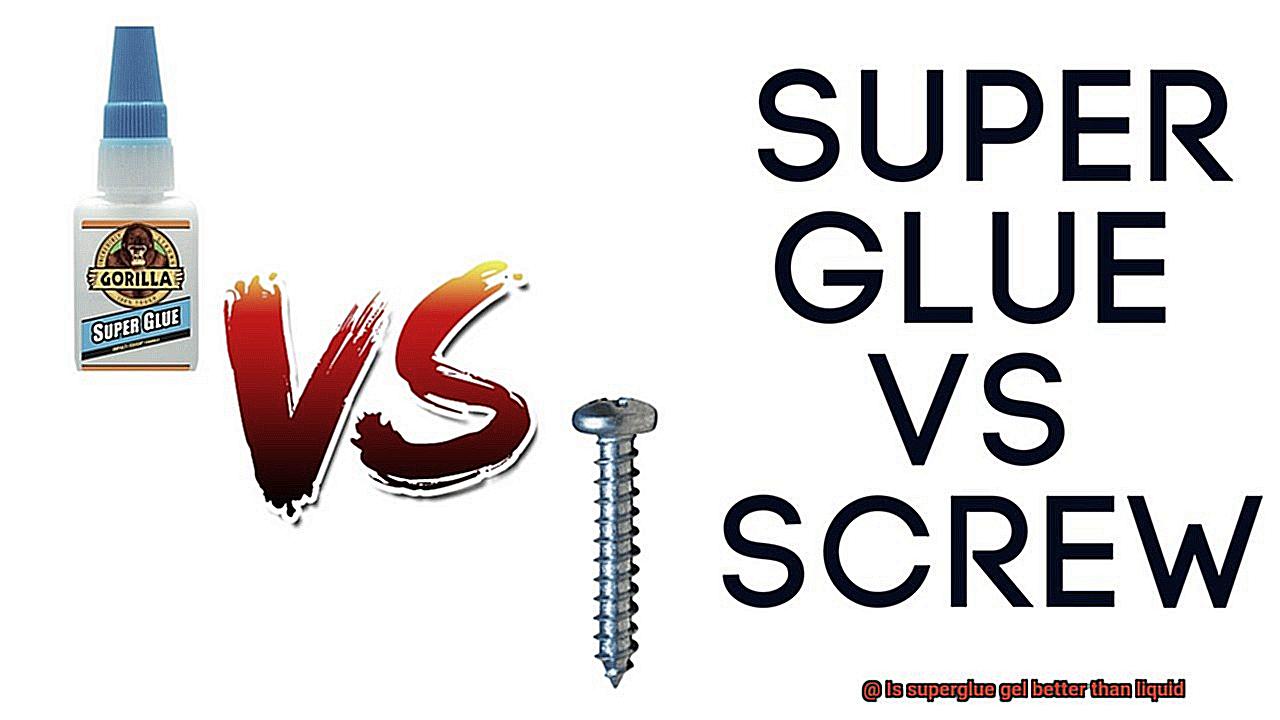
Surprisingly, liquid superglue has found its way into the medical field as an alternative to traditional sutures for closing wounds. Its adhesive properties create a strong bond that holds the wound together while it heals, especially for small cuts or lacerations. This makes liquid superglue a valuable tool in emergency situations.
Woodworking:
Woodworkers rely on liquid superglue for its excellent bonding capabilities. It excels at gluing small pieces together or repairing minor damages on wooden furniture. Its quick-drying nature saves time and ensures a reliable bond, making it an indispensable adhesive for woodworking projects.
Electronics:
In the electronics industry, liquid superglue is a trusted adhesive. It can repair circuit boards, secure loose wires, or bond small electronic components together. Its strong bonding properties and ability to withstand high temperatures make it reliable for electronic repairs, ensuring long-lasting results.
What is the Difference Between Gel and Liquid Superglue?
Navigating the glue aisle can feel overwhelming, with rows of options vying for your attention. Among them, gel and liquid superglue stand out as popular choices. But what sets them apart?
The key difference lies in their consistency. Liquid superglue, with its thin and watery texture, swiftly spreads across surfaces, making it ideal for smooth materials or when a quick drying time is desired. Its thinness also allows it to fill small gaps or cracks effortlessly.
In contrast, gel superglue boasts a thicker and more viscous consistency. This grants the user greater control, preventing the glue from spreading as easily as its liquid counterpart. Consequently, gel superglue excels on vertical or porous surfaces where precision application is paramount. With minimal dripping or running, it’s perfect for delicate or intricate objects.
Drying time diverges as well. Liquid superglue sets rapidly due to its thinner consistency. However, gel superglue typically takes longer to cure, affording more time for adjustments or repositioning before the bond solidifies permanently.
Both variants create robust bonds, but gel superglue’s thicker texture allows it to fill gaps and uneven surfaces with more efficacy.
Consider shelf life too: gel superglue tends to have a lengthier one compared to liquid counterparts due to its resistance to drying out or evaporating over time.
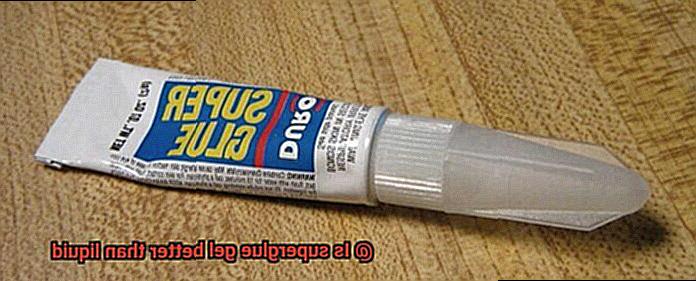
Compatibility-wise, both gel and liquid superglue work wonders on metal, plastic, rubber, ceramic, and wood. However, specific formulations may better suit certain materials, so consult product labels or manufacturer instructions for guidance.
Liquid superglue often comes in small bottles with precision applicator tips for meticulous application. Gel superglue may be found in squeeze tubes or bottles with nozzles for controlled dispensing.
Price-wise, there’s generally no significant difference between the two types—they’re both affordable and widely available.
How to Choose Between Gel and Liquid Superglue?
Superglue is a powerful adhesive that can bond materials together quickly and securely. When it comes to choosing between gel and liquid superglue, there are a few key factors to consider. In this blog post, we will explore the differences between gel and liquid superglue and provide insights on how to select the right one based on material compatibility, application, drying time, and personal preference.
Gel vs. Liquid: The Basics
Gel superglue has a thicker consistency, similar to toothpaste, while liquid superglue is more runny and watery in texture. Gel superglue stays in place better and is ideal for vertical applications, while liquid superglue spreads easily, making it suitable for flat surfaces or hard-to-reach areas.
Material Compatibility Matters
Consider the type of material you want to bond. Gel superglue works best on porous materials like wood, fabric, or ceramics, thanks to its ability to penetrate into these surfaces. On the other hand, liquid superglue is more suited for non-porous materials such as glass, metal, or plastic.
Application: Precision or Versatility?
Think about the application you have in mind. If you need precise control over where the adhesive goes, gel superglue is your best bet. Its thicker consistency allows for better control and prevents spreading beyond the desired area. If you require a wider coverage area or need to fill gaps, liquid superglue’s runny nature makes it more versatile.
Drying Time: Fast vs. Slow
Consider how quickly you need the adhesive to dry and bond the materials together. Gel superglue generally has a longer curing time, requiring more patience before achieving maximum strength. Liquid superglue, with its thinner consistency, typically bonds faster.
Personal Preference: Your Choice Matters
Ultimately, personal preference plays an important role in the decision-making process. Some people find gel superglue easier to work with due to its thicker consistency and less messy application. Others prefer liquid superglue for its ease of spreading and wider coverage area.
Tips for Applying Gel or Liquid Superglue
Superglue is a versatile adhesive that can quickly fix and bond various materials. However, it’s important to choose the right type of superglue for your specific project. Gel and liquid superglues differ in consistency and application methods. In this article, we will explore the differences between gel and liquid superglue and provide tips for applying them effectively.
Understanding the Difference:
Gel superglue is thick and viscous, making it perfect for vertical applications or when you need precise control. Its gel-like consistency allows it to stay in place without dripping or running. On the other hand, liquid superglue has a thin and runny consistency, which makes it ideal for larger surface areas that require quick and easy spreading.
Prepare the Surface:
Before applying either gel or liquid superglue, ensure that the surfaces are clean and dry. Any dirt, dust, or grease can weaken the bond, so it’s crucial to remove them thoroughly. Use a clean cloth or alcohol-based cleaner to clean the surfaces and allow them to dry completely before applying the glue.
Applying Gel Superglue:
When using gel superglue, squeeze a small amount onto one surface. Remember, a little goes a long way with gel superglue. Use a toothpick or a small applicator to spread the gel evenly over the surface you want to bond. Work quickly yet precisely as gel superglue sets rapidly.
Applying Liquid Superglue:
For liquid superglue, apply a small amount onto one surface. Be cautious not to use too much as it may cause overflow and create a messy application. Use a brush or a cotton swab to spread the glue evenly across the surface, ensuring complete coverage.
Clamping and Holding:
To achieve a strong and durable bond, it’s essential to clamp or hold the surfaces together until the glue sets. For larger projects, use clamps or rubber bands to hold the pieces firmly in place. For smaller items, apply pressure by holding them together with your hands. This step ensures that the glue cures properly and creates a tight bond.
Cleanup and Drying Time:
After applying either gel or liquid superglue, clean up any excess glue immediately. Acetone or nail polish remover can help dissolve and remove the glue from skin or surfaces. However, be cautious as acetone may damage certain materials, so it’s important to test it in an inconspicuous area first. Allow the glued item to dry fully before subjecting it to any stress or pressure.
Common Mistakes When Using Superglues
Superglue is a versatile adhesive that can be a game-changer for fixing broken items or creating DIY projects. However, using superglue requires precision, and there are common mistakes that people often make, compromising the effectiveness of the bond or damaging the materials being glued. In this article, we will explore these common mistakes in detail and provide tips to help you avoid them. By following these guidelines, you can ensure successful superglue projects every time.
Neglecting Proper Surface Preparation:
One of the most prevalent mistakes is not adequately preparing the surfaces before applying superglue. To achieve a strong bond, it is crucial to clean the surfaces thoroughly, ensuring they are dry and free from debris. Wiping down the surfaces with alcohol or acetone removes dirt, oil, and residue that could compromise the adhesion.
Using Too Much or Too Little Glue:
Finding the right amount of glue is paramount for a successful bond. Applying excessive amounts of glue leads to overflow and messy bonds, while using too little results in weak adhesion. To achieve optimal results, apply a thin, even layer of glue to both surfaces.
Misaligning Surfaces:
Proper alignment is essential for a strong bond. Many people rush through this step and end up with misaligned surfaces or weak bonds. Take your time to carefully align the surfaces and hold them together firmly for a few moments after applying the glue. This ensures a secure bond and prevents misalignment.
Insufficient Curing Time:
Superglue requires adequate time to fully cure and reach its maximum strength. Rushing the process by moving or using the glued items too soon weakens the bond or may even cause it to break entirely. It is crucial to follow the manufacturer’s instructions regarding curing time and avoid stressing the bond until it is fully cured.
Improper Storage:
Proper storage is often overlooked but plays a significant role in maintaining the effectiveness of superglue. Failing to tightly seal the container and storing it in a cool, dry place can lead to premature drying or hardening of the glue. After use, ensure the cap is securely closed and store the glue away from air and moisture.
WSqdcZ5rLM0″ >
Also Read: Is Gorilla Super Glue Waterproof?
Conclusion
After careful consideration and analysis, it is clear that superglue gel surpasses liquid in terms of performance and convenience. The gel formulation provides a thicker consistency, allowing for better control and precision during application. Its viscosity ensures that it stays in place without running or dripping, making it ideal for vertical surfaces and intricate projects.
Not only does superglue gel offer superior bonding strength, but it also boasts a longer shelf life compared to its liquid counterpart. The gel’s ability to resist moisture and withstand temperature variations makes it more durable and reliable over time. Say goodbye to frequent trips to the store for replacements.
In addition, the gel’s extended curing time allows for adjustments and repositioning before the adhesive sets completely. This feature proves invaluable when working on delicate or complex assemblies where precise alignment is crucial.
Furthermore, the ease of use with superglue gel cannot be overlooked. Its thick consistency prevents accidental spills or excessive application, reducing waste and mess. No more sticky fingers or frustrating clean-up sessions.
In conclusion, superglue gel emerges as the clear winner when comparing it to liquid superglue. Its thicker consistency, enhanced control, longer shelf life, extended curing time, and overall ease of use make it the go-to choice for various bonding needs.

